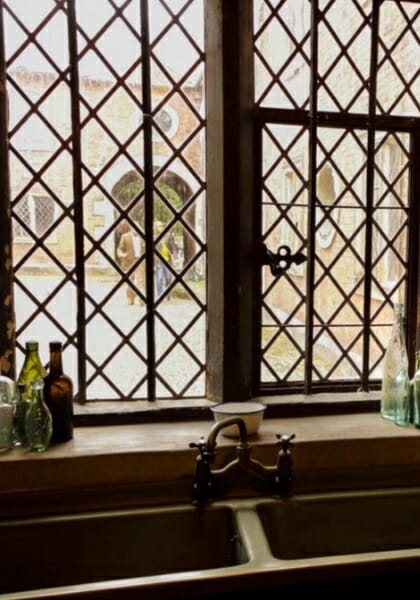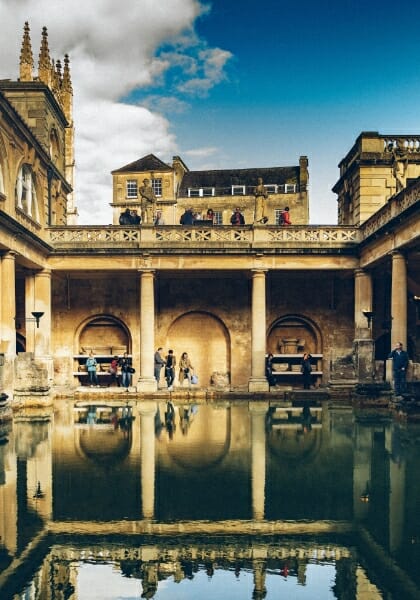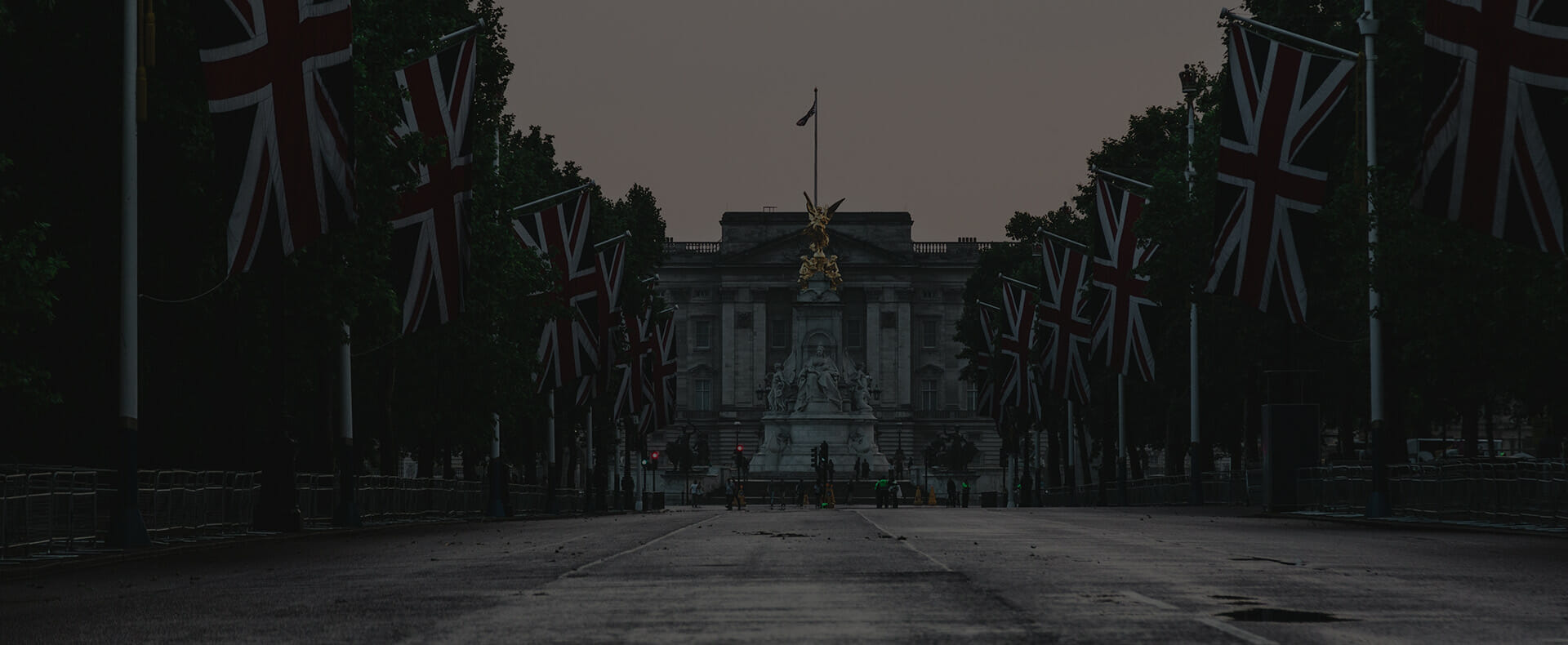Planning a few days out in the UK? Or wondering where some of the most popular historical tourist attractions are if you’re taking a longer vacation here?
Well, we’ve got a fabulous selection of ideas to pique your interest with this guide to some of the best historical sites to visit in Britain. From Scotland down to London, there will be something to engage everyone. Search for a train from London to Edinburgh.
…and what’s more, we’ve got some hints and tips from experts so you can have the best experience traveling in the UK – whether you’re coming from home or abroad.
Ready to explore? Come with us.
Scotland
Edinburgh and Glasgow
When in Scotland, visiting the country’s two largest cities is a must – not just for the chance to wander their streets and soak up the atmosphere but also to indulge in some real ancient history.
Edinburgh Castle is a must-see. It’s believed that there has been a human settlement on the site where the castle sits since 900 BC, and many centuries later, in 1566, it saw the birth of the monarch that eventually united the two countries of Scotland and England, King James VI (and I of England).
Today, guided tours offer an unrivaled chance to see this historic site that’s played a pivotal role in shaping Scotland over the years.
In Glasgow? Take a trip over to Kelvingrove Art Gallery, Park, and Museum, a wonderful site built in 1852 that has provided recreation for the residents of the area since it was erected and is now home to one of Europe’s greatest art collections, containing works by Monet, Gauguin, and Renoir. Plan your journey by train from London to Glasgow.


North of England
Liverpool and Manchester
The North of England is richly diverse in its historic offerings. So, if you’re headed to Liverpool, one of the most interesting sites to see is the Western Approaches Museum, which is a great day out for any military history buffs. The site sits within a former World War Two bunker complex and hasn’t been touched since the doors were locked shut for the final time in August 1945. Guided tours show you the underground telecommunications and mapping rooms and explore the bunker as a whole. Book your London to Liverpool train.
If you’re near Manchester, you won’t go far wrong with a beautifully restful day spent at Dunham Massey – a fantastic 17th-century country house in Altrincham, one of the most inspiring examples of Georgian design in existence. Wander the gardens or take a tour of the house.
London and the South
Bath, Oxford, and our Capital City
Heading further South to the capital and its nearby cities?
Bath is one of the most beautiful cities in the county of Somerset. Here, you should definitely stop to spend some time at the Roman Baths. These were built in 44AD, and a tour offers a very detailed glimpse into the lives of ordinary Romans in the town they named Aqua Sulis. Search for a London to Bath train.
No trip to Oxford would be complete without a trip to Blenheim Palace – just eight miles out of the city. Built in the 18th century, it was home to the Churchill family, and Capability Brown designed its grounds.
Of course, you’ll be spoilt for choice in London – with no end of historical sites to visit, so why not take a little relaxing stroll down to St James’ Park to get some fresh air and a relaxing walk? As well as beautiful views, you’ll be able to spend some time with the parks’ resident Pelicans – who have been bred there since 1648 when the Russian Ambassador gave them as a gift to King Charles II!

Why are we so fascinated with visiting historic prisons and sites relating to crimes?
“I spend a lot of my free time visiting other castles, prisons and heritage sites because I have a passion for history and am fascinated by what remains from the past and what we can learn from that. I have recently visited a couple of castles which have changed function over time into prisons and centres for the administration of justice and am always interested to compare and contrast the physical remains with Oxford Castle and Prison and see similar patterns and stories emerging. Many sites started out as motte and bailey Norman constructions in the post-conquest period, withstanding sieges and civil unrest, protecting the population and dominating the surrounding area and then over time became the site of county courts and gaols with many phases of construction and additional cell blocks being added due to changing ideas about prison reform and attitudes to criminal justice.
So much of our history derives from the lived experiences of those who came before us and we focus on the lives of our former inmates; drawing on their stories to communicate with our visitors and very much keeping their memories alive on site everyday through our costumed guided tours. We also draw on these back stories to mine details for our special events and experiences so it is fascinating to visit other similar sites and hear echoes of their inmates and of their shared experience of crime and punishment, poverty, injustice and the resolve with which they met their end within the walls.
I am always struck by the sense of connection when I visit other sites – in terms of feeling an instant attachment and deep sense of place and also in terms of how we present the history of the sites as contemporary commentators and interpreters of the past. I really enjoy meeting the staff and talking to them about their work and our shared feelings about communicating with visitors within the heritage tourism industry.” Katherine Newman – Reservations and Relationships Executive – Oxford Castle and Prison
What are two vitally important things to consider if you’re organising a group trip to the UK (or anywhere abroad?)
“Two key points to consider while traveling abroad are currency and documentation.
Be sure to check with your bank regarding international exchange rates and fees prior to traveling. Buying currency is becoming more difficult and expensive – make sure you are getting the best deal.
In addition, always check with your travel provider or with the destination ahead of your departure to be sure you have proper documentation. Many countries have visa requirements or waiver programs (like the U.S. Electronic System for Travel Authorization.) Be sure you know exactly what you need to enter a country and avoid any complications.” Kory Vrieze – Director – Group Travel Odyssey
Why is Glamis Castle an ideal location to visit on a UK tour?
“Glamis Castle, reputed to be the most haunted castle in Scotland, has witnessed over six hundred years of comings and goings, from illustrious royals, prime ministers, artists, writers, family, friends, associates, tradesmen, clergy, governesses, servants, and tenants. Visitors can follow in their footsteps and drive or walk down the stunning driveway, at the bottom of which nestles the iconic Castle itself.
The Scottish family home of The Queen Mother, Glamis was the birthplace of Princess Margaret in 1930 and the much-loved childhood holiday home of Queen Elizabeth II. But royal connections go much further back. Sir John Lyon was granted the Thanage of Glamis in 1372 by King Robert II and four years later he married Princess Johanna Stewart, the King’s daughter. Janet Douglas, Lady Glamis, had the misfortune of being the sister of King James V’s despised stepfather, Archibald, Earl of Angus, and she was falsely accused of treason and burnt at the stake at Edinburgh Castle in 1537. Mary, Queen of Scots visited Glamis in 1562 (perhaps to atone for her father’s vindictiveness) and dined in the Great Hall, now the impressive Drawing Room. Glamis is probably best known for its association with Shakespeare’s play ‘Macbeth’, written for King James VI and I after his accession to the throne of England. In 1603 Patrick, 9th Lord Glamis accompanied the King to the English court, and in 1606 the King granted him the title of ‘Earl of Kinghorne’, which was extended in 1677 to include ‘Strathmore’.
The self-styled Jacobite King James VIII and III (known by his enemies as ‘The Old Pretender’) stayed at Glamis in January 1716 and ‘touched for the King’s evil’ (Scrofula, a form of tuberculosis) in the Chapel at Glamis, as it was believed only true monarchs had healing powers.
Today, Glamis is one of the top visitor attractions in Scotland and is a must-see for travellers” Ingrid Thomson – Archivist – Glamis Castle
What would you say are the main reasons Americans want to visit the UK?
“I think that a lot of Americans who want to visit the UK want to check out the historic cathedrals, ruined castles, quaint market towns, and villages — the sorts of things many Britons perhaps take for granted and maybe even find a bit boring. The UK feels familiar — but different in a way that is not completely disorienting — even to someone from Iowa. Why are what we call Milky Ways packaged as Mars bars? Why is there so much watercress in the produce section? A trip to a market or convenience store (or corner shop) can feel like a small adventure… even a trip to Basingstoke can feel like a magical journey into Hogwarts. Most of us aren’t used to roundabouts and terraced houses, after all.
Americans, on the whole, also love to visit places that don’t require them to learn another language beyond a couple of words or phrases like “muchas gracias” and “cuanto cuesta?” Americans go to Japan and leave nasty reviews on websites, complaining that Japanese people don’t even TRY to speak American. The English, on the other hand, by and large speak something that sounds like American — with just enough spelling and vocabulary differences to make things like an easily winnable game. Conversely, this is why you don’t get many American tourists in Glasgow or Newcastle.
I think that one of the real benefits of visiting the UK comes from the things you don’t necessarily expect or seek out. London is not just vibrant but international but far more diverse than most Americans expect. And even though British publications are constantly bemoaning the death of pub culture — there’s nowhere else on Earth that’s even remotely as pubby. Finally, most places in the UK — especially the cities — are extremely easy to navigate on foot, bike, bus, or train — especially compared to most of the US. As with any good vacation, you hopefully come back with a changed perspective. Maybe you’ll walk, instead of drive, to a grocery store or bar next time. It turns out that buses don’t bite. You’ll still have to make a bit of an effort to track down watercress, though, should you develop a taste for it.” Eric Brightwell – Writer and Owner – ericbrightwell.com
What are the most haunted places in the UK?
“London has a history going back 2,000 years, so there are tales of hauntings on practically every street. Older cities like the one we do tours in, New Orleans, is much like London with its deep history of the good stuff and bad stuff. It is often the horrible stories that cause the dead to move to the plane of ghosts. The great thing about ghost tours in London (and New Orleans) is that there are really great stories that go along with every haunting.” Chris Falvey – Partner – Unique NOLA Tours
What are the best UK cities to explore on foot?
“UK cities seem small to visitors from the US, so they are all easy to explore on foot. But best of all is London. It is a great city to explore by foot. There is lots of great street food and of course, all those world famous landmarks like Big Ben, St Paul’s Cathedral and the Tower of London, to mention just a few.” – NOLA Tour Guy
What are some good places to visit in the UK for people interested in military history?
“There are hundreds of wonderful military museums and exhibitions across the UK. My top places to visit in the UK for Military history are as follows:
Imperial War Museum Duxford
Imperial War Museum London
Churchill War Rooms
Bletchley Park”
Russell Moore – Director of Events and Outreach – USS Hornet
Where would you recommend to visit to learn more about British royalty?
“Windsor Castle should be high on any visitor’s list of places to visit if they are interested in British Royalty. It’s the oldest continuously occupied castle in the World and was used by all the British monarchs including even during the Commonwealth era by Oliver Cromwell! It is also the burial place of Edward IV, Henry VIII and most recently, Her Majesty the late Queen Elizabeth II. I would also highly recommend Kensington Palace where Queen Victoria was born. She found out that she was Queen and held her first council meeting here. Both of those venues are still occupied by the current British Royal family but a trip to Hampton Court Palace tells of a story of changing fortunes in the British Monarchy.” Philippa Lacey Brewell – Managing Director – British History Tours
